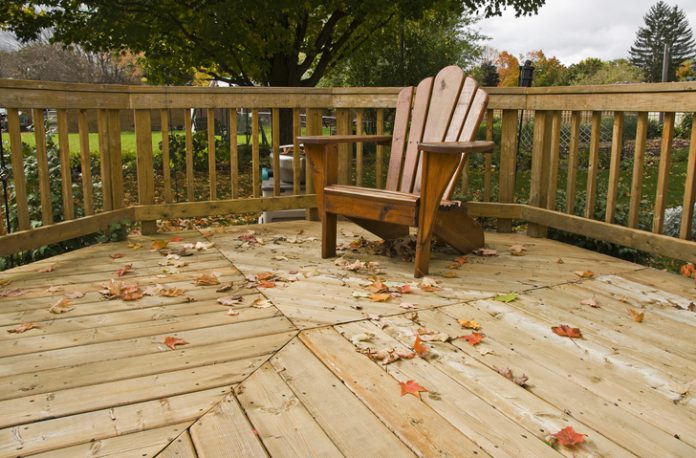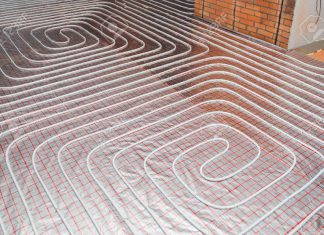Cool, crisp mornings and tree leaves change into vibrant shades of red, orange, and yellow – autumn is finally here. Summer’s end signals the need to prepare, plan, and prevent before the winter season comes. That’s why autumn is hailed as the best time for deck repair. It presents the ideal conditions to get ahead on maintenance by getting much-needed repairs out of the way. Yet, what repairs would be best to do in autumn? Find out here what autumn repairs to do before the fresh snow hits the ground.
Replace Damaged Boards
Autumn is a time of reflection. Use this opportunity to consider everything your deck has been through during the year. Was there a heavy season of consistent rainfall? Did any erupting tree branches cause any damage to your deck? These are important questions to consider for deck repair – namely, replacing any damaged boards. After all, a year can put its toll on your deck with wear and tear. With that said, there are various ways for your boards to become damaged and warrant replacement.
These are the tell-tale signs of damaged boards requiring replacement:
- Cracking
- Dents
- Rot
- Splitting
- Warping
If you notice any of the listed damages, get them fixed immediately. Beyond ruining the aesthetics of your deck, these damages can create a host of issues. With many of these damages stemming from moisture, it’s hard to get rid of water that’s already affected your boards. If you don’t address it, it can affect the structural integrity of your deck by causing it to deteriorate once winter comes. By replacing your deck’s boards, you can ensure it’s strong and looks good for the year ahead – even when winter passes.
Staining & Sealer For Your Deck
Once you replace your damaged boards, you might want to think of ways to prevent any potential damages in the future. Another good deck repair to consider is staining and sealing your deck. Did you find your boards were cracked before replacing them? If that is the case, it would be best to get staining done for your deck. Staining helps as a means of protection for the most part, but most notably for its pigment that blocks UV rays. In turn, the sunshine’s rays won’t dry out your wood into cracking. If you found your boards were warped and rotting, consider getting sealing done. A sealer will help prevent moisture damage by preventing any water from getting absorbed. With the cooler autumn conditions, it’s the perfect time to get staining and sealer deck repair done since you can ensure it gets done properly without a hitch.
Inspections & Other Miscellaneous Repair
Certain damages are less apparent to others. That’s why it’s good to have another pair of eyes by getting an inspection done for your deck. Before diving into any deck repair, it would be best to reach out to a professional for an inspection. With their expertise, they can not only pinpoint significant damages but also get ahead in helping fix said issues.
Here is what you can expect from an inspection to look into:
- Base Support: These are the footings & columns. They are susceptible to rot, movement, and splitting potentially.
- Soil Under the Deck: The under your deck is important as improper care leads to insects and moisture damage.
- Structural Support: The boards under the deck flooring support the deck. Rot & insect infestation can cause damage to wooden boards, leading to structural problems.
- Flashing Details & Fasteners: Flashing is a sheet of metal usually used where the house meets the interior joist or header, while the fasteners include nails, screws, & bolts. If there are any signs of rotting or rust, these are supposed to get replaced immediately.
- Attachments: These are the areas where the deck attaches to something (e.g. a house), typically with bolts. Addressing attachments is important regarding general support.
- Framing Brackets: Any joist hangers, “T” brackets, “L” brackets, and span braces fall into this area’s category. Checking for signs of weakened brackets is important (e.g. rot, white stains, rust, and any that’s been cut, bent, or altered).
- Decking: These are the boards that lay flat on the surface of the deck you walk on. Damages are obvious since many can spot wood lifting, splitting, and rotting.
- Wood Condition: Overall, it is meant to check for the condition of all wood, framing, decking, rails, and supports for warping, bowing, splitting, and rot.
- Stairs & Steps: If stairs & steps are damaged, they can cause dangerous accidents if they are not fixed.
- Deck Railings: Like stairs & steps, you don’t want them to be weak lest they lead to an awful accident just from leaning over the deck’s railing.
Autumn is the best time for deck repair. It allows you to complete all necessary repairs just in time for winter and the year ahead. Then, you can have peace knowing your deck looks better and stronger.














